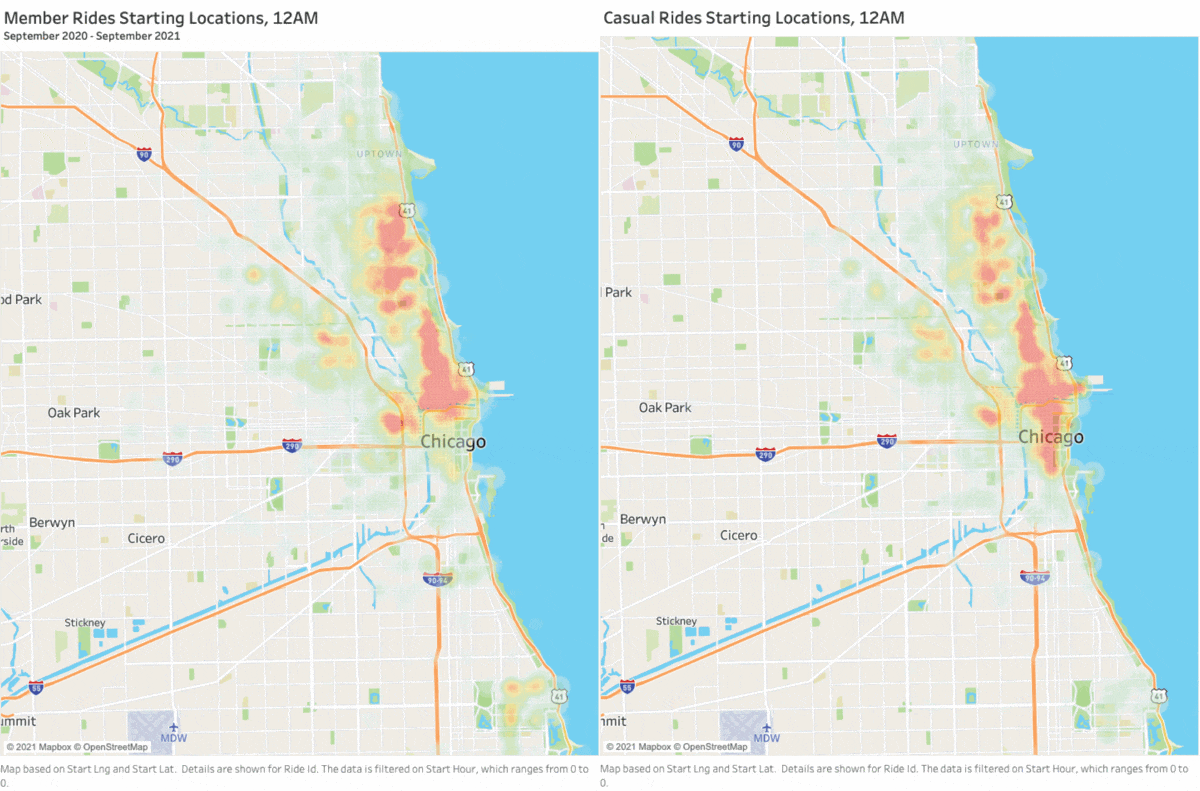
Cyclistic Case Study
How do annual members and casual riders
use Cyclistic bikes differently?
"B-Cycle Bicycles" by W.D. Vanlue is licensed with CC BY-NC-SA 2.0
Volumetrically, members account for 54.33% of total ridership.
Both members and casual users follow similar patterns of use, peaking in the summer to fall months, and declining through the winter and spring.
Member usage remains close to the mean throughout the week and weekend, while casual usage drops sharply on Mondays through Thursdays, and increasing significantly on Fridays through Sundays. This suggests that member usage could be composed largely of local users, whereas casual users could be tourists.
Member usage has three peak areas that correlate with morning rush hour, lunch breaks, and evening rush hour. This suggests that member usage could be associated with commuters.
The average trip duration for casual users is 2.82x longer than that of members, suggesting that members know their destination and head directly there. Additionally, both groups see a peak during the January to March timespan, the coldest part of the year in Chicago. This could mean that more time is spent indoors during their rental period, thusly extending the rental.
Rideable type choice between both members and users follow the hierarchy of classic bikes first, followed by electric bikes, then docked bikes.
While members use both classic and electric bikes more than casual users, casual users use docked bikes more than members.
Casual users have a strong preference for the Streeter Dr & Grand Ave station, with more than double the volume of the next busiest station at Millennium park. Both locations are popular tourist destinations.
Member usage has a more even distribution, featuring a more consistent decreasing trend across the top ten stations. The stations frequented by members tend to be mixed use commercial and residential areas.
Throughout the average day, member usage is more broadly spread, with reductions between the rush hours. Casual usage is also widespread, however, there is a sharp tightening toward the popular tourist locations during the early afternoon to evening.
The data indicates that casual users are likely to primarily be tourists using the service to go sightseeing, while members are likely to be primarily locals that use the service for commuting. Casual usage drops dramatically during weekdays, and the length of an average casual trip is nearly three times longer than that of a member’s.
To promote greater casual user adoption, a weekly membership option could be offered. This could encourage greater use on weekdays, while reducing pressure on casual users to maximize their time used during a single ride.












